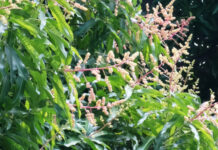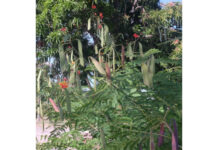 A male boreal toad waits for opportunities to mate near a Colorado mountain lake. Brittany Mosher, CC BY-ND
A male boreal toad waits for opportunities to mate near a Colorado mountain lake. Brittany Mosher, CC BY-ND
Saving amphibians from a deadly fungus
means acting without knowing all the answers
by Brittany A. Mosher, Colorado State University; Brian Gerber, University of Rhode Island,
and Larissa Bailey, Colorado State University
The calls of frogs on warm nights in the spring are a welcome sound, telling listeners that the seasons are changing and summer is coming. Today, however, ponds that once echoed with the chirps, chuckles and calls of frogs and toads are falling silent around the world.
This loss is worrying. Amphibians are the environment’s canaries in the coal mine. Their declines provide early warning signs to scientists that stressors like habitat loss, climate change, pollution and disease are making ecosystems unhealthy. Without amphibians, insect and algae populations multiply, causing cascading effects on other organisms – including humans.
Almost half of all amphibian species on Earth are declining, and a disease called chytridiomycosis is one culprit. We work with a team of scientists and resource managers who are trying to keep amphibian populations healthy in the face of this disease.
Good science always involves uncertainty, but uncertainty makes it hard for managers to decide which of many possible actions to take. Moreover, while scientists do field work, analyze data and present results, government agencies and other land managers typically make the decisions about how to conserve species. However, we have learned that when these groups work together, we can move toward solutions step by step.
 Global distribution of threatened amphibian species. IUCN, CC BY-NC-ND
Global distribution of threatened amphibian species. IUCN, CC BY-NC-ND
Confronting an ‘amphibian apocalypse’
The word “amphibian” has Greek roots and means “double life.” These aptly named creatures split their time between water and land. Many amphibians use their sponge-like skin to breathe and absorb nutrients, so they are sentinels of environmental changes in both habitats.
The frog infection chytridiomycosis is caused by a fungus known as Bd, short for Batrachochytrium dendrobatidis and popularly known as chytrid fungus. Like amphibians, Bd has several life stages: a swimming spore that lives in water and an encysted form that occurs on frogs’ and toads’ sensitive skin. Infected animals grow lethargic and malnourished, often dying within weeks.
Several of the world’s most extraordinary amphibian species have already gone extinct due to chytridiomycosis, including the stranger-than-fiction gastric-brooding frog (which reared offspring in its mouth) and the beautiful Panamanian golden frog. Hundreds of other species are on the brink of extinction. Eradicating Bd is likely impossible, so we need to take alternative management actions to bolster amphibian populations if we want to see them survive.
Scientists have learned a great deal about Bd and its impacts over the past 20 years. Researchers know that some Bd strains are more dangerous than others; that some amphibians are genetically resistant or have other mechanisms that help them tolerate infection; and that environmental differences can create drastically different disease dynamics.
Researchers have called the disease-related decline of amphibians an apocalypse that requires an unprecedented conservation response. But despite great advances in knowledge about Bd and amphibians, no one has identified consistent, effective actions that we can use to halt or reverse these declines.
 The life cycle of Bd starts with an aquatic spore that burrows into the skin of amphibians. Brian Gratwicke, CC BY
The life cycle of Bd starts with an aquatic spore that burrows into the skin of amphibians. Brian Gratwicke, CC BY
Knowing enough to act
For the past three years, we have been part of a team tasked with merging science with management in an effort to save boreal toads, which live at high elevations in the Rocky Mountains. Juvenile toads are the size of your fingernail, but eventually grow as large as baseballs when they are sexually mature. They spend more than half of their lives buried in snow, waiting for opportunities to feed and breed in spring. Boreal toads are highly susceptible to Bd and now occupy only a fraction of their former range.
 A researcher swabs the skin of a boreal toad to test for chytrid fungus. Brittany A. Mosher, CC BY-ND
A researcher swabs the skin of a boreal toad to test for chytrid fungus. Brittany A. Mosher, CC BY-ND
The Boreal Toad Conservation Team includes resource managers from federal and state agencies in Colorado, Wyoming and New Mexico and scientists from Colorado State University and the US Geological Survey. The team used research on current toad populations to help predict how toads might fare in the future under various possible management actions. It was humbling and exhilarating to see our work used to make decisions that might influence the fate of a species. But we wondered whether “our” science was truly the best available, and whether our team would make the “right” decision – or even have enough information to know which choice was most likely to succeed.
Our action plan, recently published in Conservation Letters, proposes multiple strategies, including reintroducing toads to wetlands in Colorado; managing wetland habitats to prevent them from drying out; and slowing the spread of Bd by requiring researchers to carefully disinfect boots and gear after visiting a wetland.
No single solution
We have found that relocating captive-reared boreal toads is an especially effective strategy and shows some promise of successfully restoring this mountain resident to its high-elevation ecosystem. Lessons from our research will help other scientists find effective strategies for monitoring and making decisions in areas where Bd may spread.
 Researchers carefully monitor tadpoles that they have introduced to a site in Rocky Mountain National Park. Eggs are collected from the wild, reared to tadpole age in captivity, and then carried in backpacks filled with water to the reintroduction site. Brittany A. Mosher
Researchers carefully monitor tadpoles that they have introduced to a site in Rocky Mountain National Park. Eggs are collected from the wild, reared to tadpole age in captivity, and then carried in backpacks filled with water to the reintroduction site. Brittany A. Mosher
For example, Bd has recently spread to Madagascar, a mega-biodiversity hotspot with about 300 frog species, nearly all of which are found nowhere else on Earth. Our work could help managers in Madagascar formulate a national monitoring plan and prioritize strategies for conserving amphibian populations.![]() Wildlife diseases are notoriously hard to study and act on because they are new and complicated problems. At the start, scientists may not even be able to differentiate helpful actions from those which might be harmful. We have learned that it is rare that one single action will save a species. Rather, conservation is a learning process and a product of many actions and people. And the promise of restoring singing frogs to silent ponds is a powerful incentive for all of us to keep learning.
Wildlife diseases are notoriously hard to study and act on because they are new and complicated problems. At the start, scientists may not even be able to differentiate helpful actions from those which might be harmful. We have learned that it is rare that one single action will save a species. Rather, conservation is a learning process and a product of many actions and people. And the promise of restoring singing frogs to silent ponds is a powerful incentive for all of us to keep learning.
Brittany A. Mosher, Postdoctoral Researcher, Colorado State University; Brian Gerber, Assistant Professor of Natural Resources Science, University of Rhode Island, and Larissa Bailey, Associate Professor of Fish, Wildlife and Conservation Biology, Colorado State University
This article was originally published on The Conversation. Read the original article.
~ ~ ~
These announcements are interactive. Click on them for more information.










